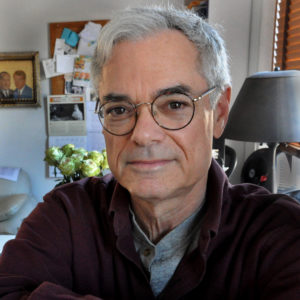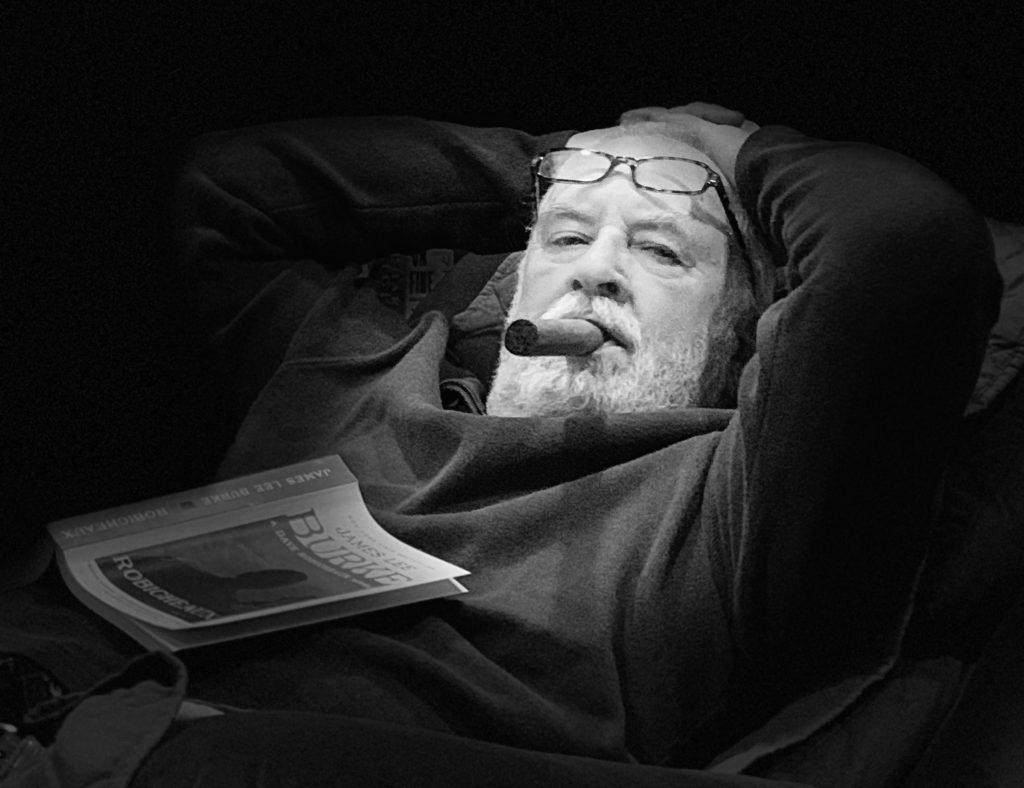Avoid sucking black holes of negativity in your newsroom and your writing life. They will bring you down with them.
h/t Christine Martin
Avoid sucking black holes of negativity in your newsroom and your writing life. They will bring you down with them.
h/t Christine Martin

Believe 100 percent in what you write. I know people who have angles or hot takes that they don’t believe, but know it will get attention. I know people who write in ways (everything from angle to style to the words chosen) to please others, like editors or sources or readers. Be you. Your name is at the top. If you don’t believe in every word below it, why should anyone else?
That I have a writing life at all. I never imagined it. I was a manager for Costco until I was 29. When I went back to school to get a journalism degree, I truly didn’t know if I would be any good at writing. I had never published anything. I thought it would be fun to be a reporter, and I figured I had read enough newspaper stories in my life that I knew good ones from bad ones. My first published article, I think, was a gamer for a baseball game as a stringer for the Denver Post, and the editor on duty seemed pleasantly surprised at how quickly I did it and how clean the copy was. People have been giving me opportunities ever since. Believe me, I sometimes don’t think I do this very well. I’m always about one painful graf or story away from thinking I’m a fraud about to be exposed.
I’m devoted to non-fiction, so I’m a bigger fan of similes. They feel more honest. As a writer, I’m like a winding trail in the woods. You might not always see where you’re going, but I think you’ll appreciate exploring what’s around the next bend.
Just go. That sounds like it has more to do with reporting than writing, but those two things are the heart and lungs of journalism. One’s not much good without the other. Every story starts with a foggy idea and lots of questions: What are the angles? Who are the characters? Where are the threads to pull? The answers can be hard to see, obscured by cubicle walls or the glow of the laptop, our preconceived notions or lack of imagination. The best brainstorming sessions end with an editor — I’m thinking of Jason Stallman at The New York Times — giving the best advice: Just go. It is never a bad decision. After all, my job is to take people places through my writing, and I can’t do that if I don’t go there with my reporting. Sure, I’ve written plenty of pieces that were reported and written from my desk. But I have never loved any of them.
Craft Query: How would you answer these three questions?
May the writing go well.

Photograph by Danka & Pete courtesy of unsplash.com

On the surface, Ernest Heminway’s iconic 1927 story, “Hills Like White Elephants,” is about a man and a woman having a conversation and drinking together while waiting for a train.
Lurking beneath the surface, however, is the question between the two over whether the woman will have an abortion. The words “pregnant” and “abortion” are missing.
The warm wind blew the bead curtain against the table.
“The beer’s nice and cool,” the man said.
“It’s lovely,” the girl said.
“It’s really an awfully simple operation, Jig,” the man said. “It’s not really an operation at all.”
The girl looked at the ground the table legs rested on.
“I know you wouldn’t mind it, Jig. It’s really not anything. It’s just to let the air in.”
The girl did not say anything.
“I’ll go with you and I’ll stay with you all the time. They just let the air in and then it’s all perfectly natural.”
Then what will we do afterward?”
“We’ll be fine afterward. Just like we were before.”
At work here is his theory of omission, or more colloquially, “the iceberg theory of writing.”
It’s found in chapter sixteen of Hemingway’s nonfiction book about bullfighting, “Death in the Afternoon,” when he segues into reflections about the writing process.
“A good writer should know as near everything as possible,” Hemingway writes. That knowledge, he qualifies, should not necessarily show up in the story.
\\
“If a writer of prose knows enough about what he is writing about he may omit things that he knows and the reader, if the writer is writing truly enough, will have a feeling of those things as strongly as though the writer had stated them. The dignity of movement of an iceberg is due to only one-eighth of it being above water. A writer who emits things because he does not know them only makes hollow places in his writing.”
When the lookouts were on the Titanic on April 14, 1912, what they feared was not the jagged tops of ice that broke the surface of the North Atlantic but the mountain beneath.
The same principle holds in writing. What makes a story powerful is all the work —the process approach to writing — that lies beneath. It isn’t wasted effort, as many of us fear, but instead constitutes the essential ingredient that gives writing its greatest strengths. We write most effectively from an overabundance of material.
In “Reporter,” the 2018 memoir by Seymour Hersh, the famed investigative reporter, would spend “hours in libraries or newspaper morgues, (the home of newspaper clippings in the days before the Internet) finding everything he could in the way of background,” Don Nelson writes in a review of the book for Nieman Storyboard. For journalists and fiction writers, the “core lesson” is “read before you write.”
Donald M. Murray kept a large trash can by his desk when he was freelancing for Reader’s Digest, The Saturday Evening Post and other so-called “slick” magazines of the 1960s. He noticed that when the trash can overflowed with discarded material, the stories were better. They were worse if he found himself diving in to find something — anything — to fill space.
David Finkel filled up lots of notebooks when he was a staff writer for The Washington Post Magazine.
“I tend to write down everything I see, even if it’s something like, ‘2 rocks off to left- sedimentary??-resemble poodle.’ My hope is that as the reporting process continues, the significance of my notations will emerge. Usually, that doesn’t happen. Out of a 50-page notebook, I’ll have five pages of possibly usable quotes, ten pages of other possibly usable notes, and 35 pages of hieroglyphics.”
G
Finkel was an experienced feature writer, and later, a prize-winning author. He had more freedom than a reporter covering a meeting, say, or a speech, who has to file a story within an hour. (Finkel, who later went on to win a MacArthur “genius” fellowship, is also overly modest; many reporters who admire his stories and books would be happy to find in their notes what he considers “hieroglyphics.”)
When Wall Street Journal reporter Alix Freedman found her notebooks filled to bursting, she remembered an editor’s description of journalism’s essential challenge: “Distill a beer keg’s worth of information into a perfume bottle.”
As a Pulitzer Prize-winning investigative reporter, Freedman was accustomed to amassing a vast amount of material, more than enough to support her findings. She could spend months on a story, easily filling that metaphorical beer keg. Notwithstanding, the Journal’s news hole, the amount of column space available for the day’s edition, had its limits, even for front page blockbusters.
Freedman came up with a method to meet the challenge. On a sheet of paper, she listed all the facts, quotes, statistics, scenes, examples and themes she’d uncovered in her reporting. She gave each one a letter grade, like a schoolteacher marking up tests.
Only the A’s made it into her story.
Her aim, she said, was to “maximize impact,” to use “not just an example but a telling example. Not just a quote but a quote on point.”
Writers aren’t always sure what information will prove to be important, so they tend to fill their notebooks or drafts with an overabundance of material. Much of it never will appear in the final story.
The power of a story comes from what’s not in it.
May the writing go well.

“
“Here is the fundamental reality about the writing business. It’s lonely. You spend all your time writing and then wondering whether what you wrote is any good.”
Don’t let rejection defeat you. Have a new submission ready to go as soon as a rejection appears in your inbox. If you’re accepted, rejoice and delete it.
In 1979, Jon Franklin won the first Pulitzer Prize for feature writing for “Mrs. Kelly’s Monster,” a dramatic rendering of a brain operation that focused on a surgeon who fought and lost a battle with a tumor.
Six years later, in 1985, Franklin won his second Pulitzer, this one for explanatory reporting for “The Mind Fixers, “a seven-part series about the new science of molecular psychiatry.
A year later, he published “Writing for Story: Craft Secrets of Dramatic Nonfiction by a Two-Time Pulitzer Prize winner.” Three decades later, it remains one of the finest handbooks available to the budding writer of narrative nonfiction.
The book still succeeds because Franklin is not just a superb writer, but a reflective practitioner and willing teacher who shares the lessons of his craft with clarity and generosity. He describes his methodology as a “step-by-step cookbook approach.” If you follow it, as I learned, you can write successful narrative nonfiction.
I purchased the book shortly after it appeared, put its lessons into practice, and can testify to its power. To prepare for a new writing project, I recently dove back into my copy.
I was pleased to see that it was just as instructive and inspirational as I remembered.
Here are some of the most cogent lessons, mostly in Franklin’s own words, that jumped out at me as keepers; consider it a sort of Cliff Notes version of a book that deserves a spot on every storyteller’s bookshelf.
Franklin presents a coherent, easy to follow (if challenging to achieve) formula to build a story that can produce compelling stories.
He based his prize-winning theories on his study of short fiction, specifically the stories of Ernest Heminway, John Steinbeck and other writers that appeared in the Saturday Evening Post, Colliers and other popular magazines of the 1930’s and ‘40. These publications, he said, amounted to “the universal school for writers.”
The fiction they published rested on a simple but elegant formula: a complication, plus a body (or) development) and a resolution.” Franklin applies and expands the lessons of that form to the nonfiction story.
Among the highlights:
In addition to the craft lessons, Franklin also reproduces “Mrs. Kelly’s Monster,” which won the Pulitzer, “ and his series, “The Ballad of Old Man Peters,” both of which he annotates.
Although the rest of the books contains more information about structure and revision, the lessons I itemized are the most vital for anyone contemplating a piece of narrative nonfiction.
I bought the book shortly after it appeared when word of its publication was spreading among narrative and would-be-narrative writers and their editors. I decided to try and put its lessons into practice as soon as possible.
By chance, a call to theSt. Petersburg Times (now the Tampa Bay Times) reached me in the features department where I worked as a staff writer.
The caller was an elderly man named Bert Mudd who had an interesting, but dubious, story to tell. Mudd said his older brother Thaddeus had been murdered in his home in Viginia. Bert Mudd was going to find his murderer. With my marked up copy of “Writing for Story” staring at me from my desk, I asked if I could tag along.
Once I returned, with bulging notebooks and several audio tapes, I set to work.
It took a while before I could match Franklin’s formula, but eventually, I came up with:
Complication: Brother hunts killer
Resolution: Brother identifies killer
In between, I sketched out Mudd’s the developments: his travels north, fruitless encounters with authorities, his indefatigable sleuthing that led to a chance encounter with the man who would be charged, along with another man, with his brother’s killing. Because I’m working from memory here, I can’t replicate what I wrote on the cards that charted the development of the story between the complication and the resolution, but the three-word complication and resolution are tattooed into my brain.
The story, “His Brother’s Keeper,” was splashed across the front page of the features section. That day, I received two phone calls. One was from the editor of a local magazine who offered me a freelance assignment. The other came from an English professor at the University of Tampa. She invited me to give a reading of the story.
The other day, I asked Franklin to what he attributed the staying power of the lessons in his book. He replied:
“I think the lessons had power when I was able to channel our forbears. Adapt the things they knew, re-digest it and recast it for the modern reader. It also dovetails into things we are just discovering about the brain and behavior.
“I first discovered complication resolution from that wonderful book, “The Professional Story Writer and His Art.” But the authors got it from Chekhov, and I’m sure Chekhov stood on the shoulders of giants. So in my own way I was sort of writing literary history.
“These ways of conceptualizing story go back at least three thousand years — and may be genetically controlled. Certainly the anatomy of story mirrors the anatomy of the human brain. Catch the harmonics of that and you will hold fire in your hands. (That from John Steinbeck.)
I was half biopsychologist even back then.”
If you’re interested in writing narrative nonfiction, you owe it to yourself to get Franklin’s book, either by buying it or borrowing it from your local library. It’s formulaic, to be sure, but the formula works. I recommend you also take a look at “Jon Franklin and “Mrs. Kelly’s Monster,”” a 2012 Nieman Storyboard article by its editor, Paige Williams, who interviewed Franklin and reproduces the annotation found at the back of his book. In her introduction, Paige, now a staff writer at The New Yorker, said the story “never fails to captivate or instruct.”
The same can be said for “Writing for Story.”

There’s nothing worse than turning in a story and then being summoned by your editor who peppers you with questions you failed to answer. What hospital were the victims sent to ? What are their conditions? Did police lodge any charges? What was the name of the school principal? What was the name of the dog?
As a rookie reporter covering fires and accidents, I carried a checklist to make sure I got all the information I needed, or at least could answer the questions my editor might have. Over time, they became second nature, although I still jotted questions down before I headed out to a crime scene or accident? Better safe than sorry.
When a story was more complicated than a two-alarm fire or a car crash with injuries, I needed more than ever to make sure my story was complete. To cover all the bases.
Recently, I interviewed David Margolick about a story he wrote about a loud and noxious building project in his Manhattan neighborhood. The reporting was meticulously and richly detailed, from the health effects on neighbors — human, canine and feline — to the construction process and the description of the owners’ plans for an ostentatious underground entertainment center.
I was astounded by the lengths he went to to report the story. Given his history as a longtime contributor to Vanity Fair, former legal affairs writer for The New York Times and six-time book author, I shouldn’t have been surprised. Still, the lengths he went to were remarkably thorough. They display a consummate professional at work.

I sought out the presidents of the block associations on West 69th St., where the mansion will go, and West 68th St., where I live. I asked them for the names of residents closest to the construction site. To make sure I got diverse points of view, I asked those people for additional names, and also spoke to random people on the street. I went to several block association events. I also needed to identify the husband and wife who are responsible for the project, since they are hiding behind a corporate shell. This was something that virtually no one in the neighborhood had yet managed to do, but I did in surprisingly short order.
Because the man in the couple is a French businessman, I hired a French-speaking researcher to check the French and Belgian papers for information about him. Because she is a jazz singer, I checked out various musical websites, including a podcast in which she expressed great concern for rocks, trees, animals, air and various other entities her vanity project has disrupted. I never spoke to them, but it wasn’t for lack of trying. Apart from contacting publicists, I reached out to all three architects who’d worked on the project; the owners’ lawyer; their representative on the construction site; one of their fellow investors in various cultural productions they’ve backed; and the Juilliard School, where he’d been a trustee, and set up a scholarship for struggling jazz musicians. (The violinist forced to flee because of the disruption — a move that set her back $5,000 — might have appreciated some of that largesse.)
Margolick’s remarkably comprehensive approach brought to mind a reporting rubric, one far more complete and sophisticated than the checklist from my cub reporter days. They are six elements that William E. Blundell devised for himself when he was writing and editing page one stories for the Wall Street Journal and later shared as an influential writing coach in his classic guide, “The Art and Craft of Feature Writing.”
He described them in “Best Newspaper Writing 1982,” the year he won the award for best non-deadline writing. Blundell said he used these six areas to organize his material. “A few of these things are of interest, and others may not be, but I always consider all six of them,” he said.
1. History. When did this start? Who started it? What are the pivotal events on a timeline? Does my main theme development have roots in the past? What are they?
2. Scope. What is the extent of the problem? How many people are affected? How much money is at stake?
3. Central reasons. Why is this happening? What are the economic, social or political forces that created it, influence it, threaten it?
4. Impacts.“Who is helped or hurt by this,” Blundell said, “and to what extent and what’s their emotional response to it?”
5. Gathering and action of contrary forces. “If this is going on, is somebody trying to do anything about it, and how is that working out?” Blundell said.
6. The future. “If this stuff keeps up,” he said, “what are things going to look like five or 10 years from now, in the eyes of the people who are directly involved?”
Blundell used the six points to organize his reporting before he wrote. I think they can be equally valuable earlier in the process; Margolick demonstrates the value of going the extra mile in your reporting.
Blundell’s six points provide a roadmap for this kind of comprehensive research, reporting, and interviews.
Whether you’re on a daily deadline or working on a longer project like a magazine article or nonfiction book, they offer powerful assistance with the reporter’s never-ending challenge: developing expertise needed to write with clarity, completeness, accuracy and, above all, authority.
May the writing go well,

“Writing is an exploration. You start from nothing and learn as you go …It’s like driving a car at night. You never see further than your headlights, but you can make the whole trip that way.”
Always take a different route to and from work. You’ll discover stories you didn’t know existed.
h/t Vidish Priyanka

My years in journalism taught me that writing is a job—something you do whether you feel like it or not. You do not wait to be inspired. You do not search for your muse. You just plant your ass in your chair and write. The corollary for a novelist is to set a daily goal and stick to it. For me, that means writing 2,000 good words a day. If I do it in two hours, I get the rest of the day off. When the writing comes hard, I stay behind the keyboard until I reach my goal. That’s the only way I can finish a book.
That I have learned much of what I know about my craft from musicians. I could ramble on at length about all I have learned about tone, mood, pacing, story architecture, characterization, and economy of language from the likes of Otis Redding, Carol King, Kris Kristofferson, Bob Dylan, and hundreds of others. I am obsessed with how different the same song can be when it is performed by different artists. When the Chiffons belt out “One fine day, you’re gonna want me for your girl,” you KNOW it’s going to happen. But when Natalie Merchant croons the same lyrics set to the same melody, you realize it’s just a pipe dream. There are hundreds of examples of performers taking someone else’s song and making it their own. This, more than anything else, helped me find my voice as a writer.
As a journalist, I was a planner. I often outlined, and I usually wrote the ending first so I knew where I was going. As a novelist, I never plan. I just start with a general idea of what a book will be about and set my characters loose to see what happens. As I move from paragraph to paragraph, from chapter to chapter, I’m like a scent hound. (I know that’s a simile, not a metaphor, but I’ve always been a rebel.) I stop to sniff at every bush, every character, every turn in the road. Like a dog on a walk, I explore the world I am creating, discovering my story as I go. If I knew how it was going to end before I started, my desire to write the book would evaporate.
Bruce DeSilva grew up in a tiny Massachusetts mill town where the mill closed when he was ten. He had an austere childhood bereft of iPods, X-Boxes, and all the other cool stuff that hadn’t been invented yet. In this parochial little town, metaphors and alliteration were also in short supply. Nevertheless, his crime fiction, which include “Rogue Island,” “Providence Rag,” “Cliff Walk,” “A Scourge of Vipers,” and most recently, “The Dread Line,” has won the Edgar and Macavity Awards; has been listed as a finalist for the Shamus, Anthony, and Barry Awards; and has been published in ten foreign languages. He has reviewed books for The New York Times Sunday Book Review, the New York Journal of Books, and The Associated Press. Previously he was a journalist for forty years, most recently as writing coach world-wide for AP, editing stories that won nearly every major journalism prize including the Polk and the Pulitzer.